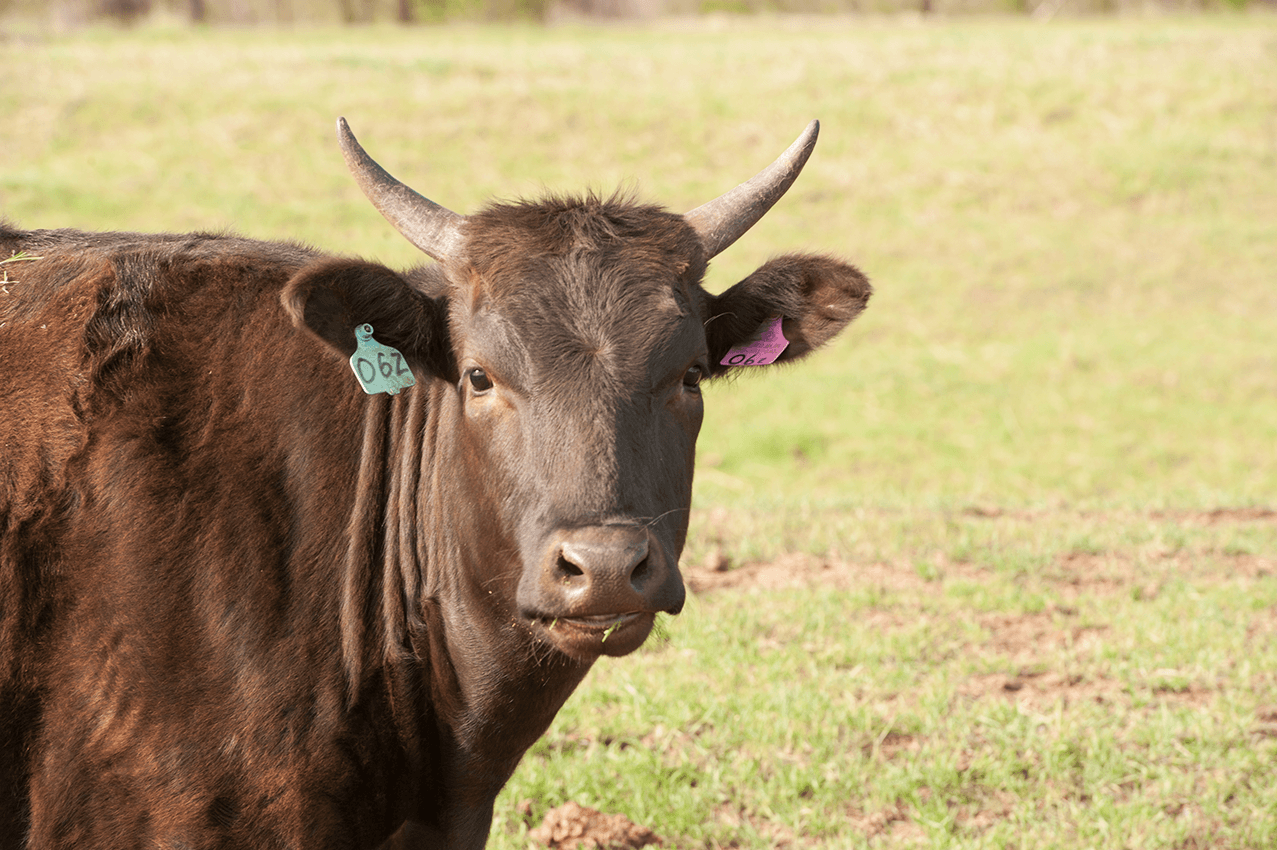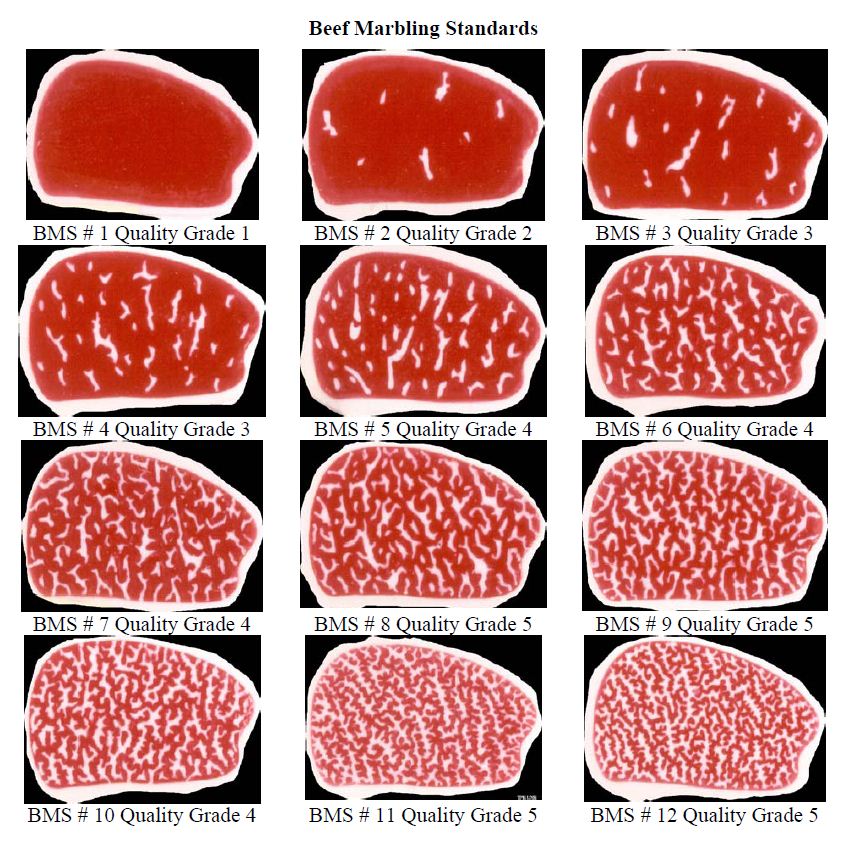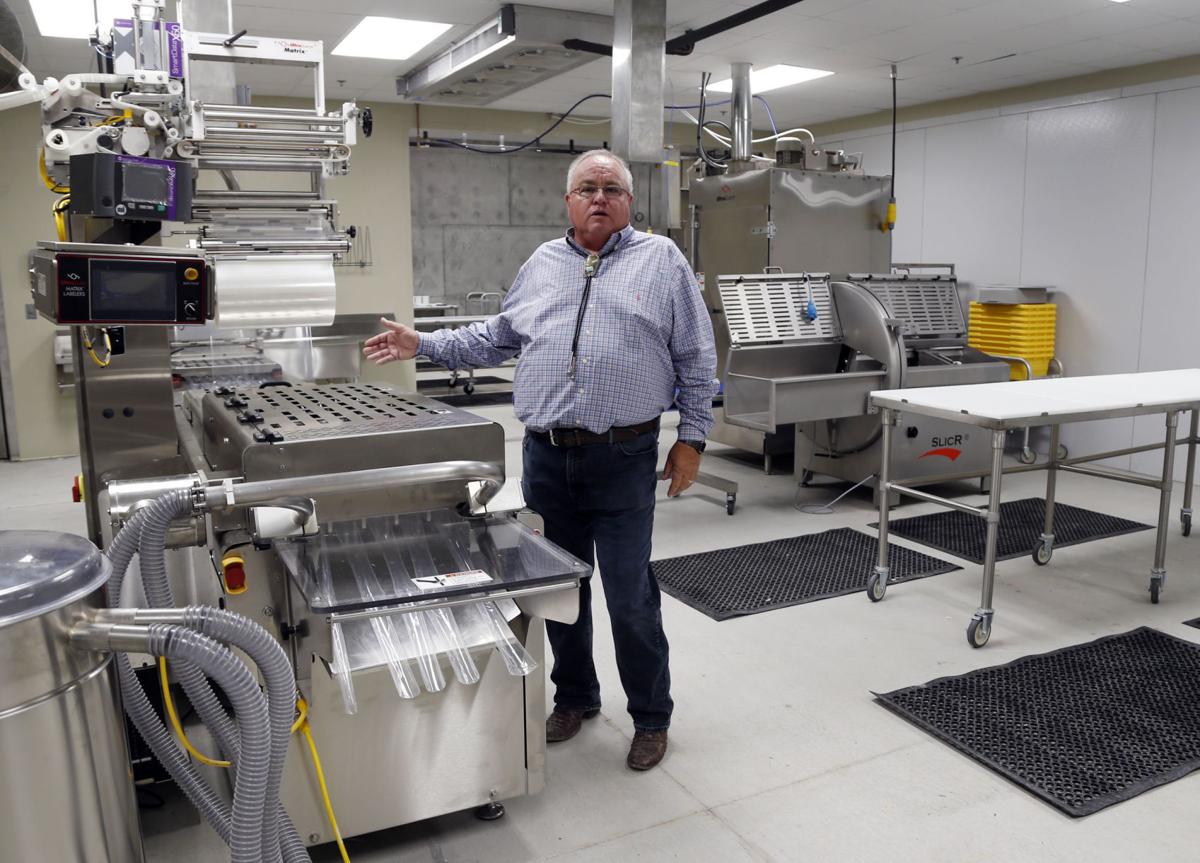
Why Wagyu?
Wagyu beef is world renowned for its extensive marbling and delicious flavor. Centuries of being bred as draft animals in the mountainous regions of Japan created the capability for Wagyu to store unparalleled amounts of intramuscular fat as energy reserves. Along with this genetic predisposition, which gives the breed unparallelled marbling capability, Wagyu displays a unique composition of fat, which is shown to have several health benefits. The monounsaturated fats, known as the ‘good fats” associated with a heart healthy diet, are shown to be present at very high ratios.
The USDA beef grading scale is rather limited with Select, Choice and Prime grades. Wagyu is graded using the International Beef Marbling Score (BMS), a number score ranging from 1 to 12. USDA Choice rates a 3 and USDA Prime is 4-5 on this scale. Beyond 5 is ultra-prime. We make every effort to provide beef at our customers’ requested marbling level.
• Genetics: Great beef starts with great genetics. We are very proud of our balanced herd, using Shimane, Tajima, and Kedaka sires in rotation to provide marbling, frame size, and maternal instincts and milk for our cattle. We have spared no efforts identifying and using the very best bloodlines possible to develop healthy animals and quality beef.
• Husbandry: Healthy, happy, relaxed animals yield the best beef and this is our goal. Daily access to grasses and our custom feed provides well balanced nutrition and comfortable growth rates.
• Consistency: We strive to provide chefs the very best in marbling and flavor. We evaluate each steer for marbling at six days after harvest to determine the BMS (Beef Marbling Score). A grade of USDA Prime is a BMS 4-5, with ultra-prime scoring a BMS 6 or greater. This effort provides our customer-chefs an exceptional level of consistency in marbling and quality.
• Transparency: We are glad to provide information about our practices and encourage chefs to pick up the phone and call with questions.
We work with USDA inspected processors to provide both fresh or frozen beef as requested. Dry-aging and pH monitoring are used to give our customers the very best product of the highest quality possible.

Quapaw, OK Processing Facility
Oklahoma is cattle country. It’s an industry worth around $3.7 billion dollars a year nationwide, and around 2 million cattle can be found here in Oklahoma — the state’s industry ranks second in the nation, according to the Oklahoma secretary of agriculture. Restaurants like Cattlemen’s Steakhouse and Cheever’s Cafe in Oklahoma City boast some of the best cuts of beef raised on one of those ranches. What Oklahoma doesn’t have are enough places to process those cows to become the meat that hits our grocery store shelves. There are no large cattle processing plants in the state.
The Quapaw plant is one of only a handful of smaller-to-midsize processing plants that have a USDA inspector on-site. That means they can sell their meat across state lines, something they’ve been wanting to do for a while. That USDA stamp also means they can take cattle from other ranchers who now don’t have to travel to neighboring states like Texas and Colorado, where the other closest USDA-certified facilities are. That makes Oklahoma’s secretary of agriculture, Jim Rees, very happy.
(read the whole article here)
